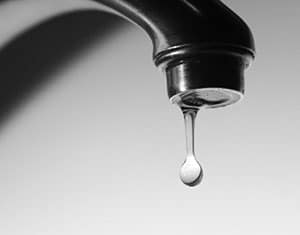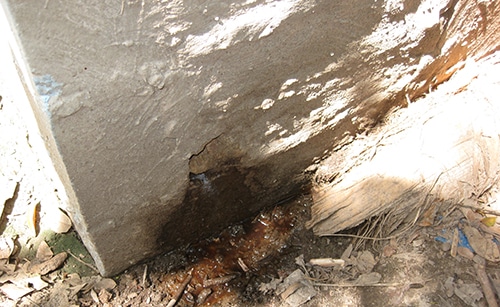How to Find a Water Leak
 If you’ve noticed that your water bill is higher than you expected, but it seems like your water usage hasn’t changed then you likely have a leak somewhere on your property. Finding and fixing leaks can save you money and is also a great way to reduce water waste. With our tips, you’ll be a water leak detection expert in no time at all.
If you’ve noticed that your water bill is higher than you expected, but it seems like your water usage hasn’t changed then you likely have a leak somewhere on your property. Finding and fixing leaks can save you money and is also a great way to reduce water waste. With our tips, you’ll be a water leak detection expert in no time at all.
Determine if the Leak is Outside your House or Inside
Your first step should be determining if the leak is between your water meter and your house or somewhere else inside your home.
- Start by shutting off the water supply to your home. The valve is usually located outside right next to the wall of your home.
- Locate your meter head. If you can’t find it try digging around some with your hands as your meter head can get covered by dirt or grass.
- Once you find it, and you’re sure that the water supply to the house is turned off, watch the meter and see if it is still turning.
- If it’s not turning than the leak is inside the house and you can move on to one of the other sections of this page.
- If the meter is still turning then there is a leak somewhere between the house and the meter or the shutoff valve to your house is leaking which is pretty common with old valves.
- Walk the route that the water line takes from your meter to your house and keep an eye out for signs that there is a leak such as soft ground, muddy areas, or areas of grass that seems to be growing much faster than others. If you find anything like this chances are that you’ve found your leak.
Look for Dark Spots on Your Ceiling
If there are areas of your ceiling that are darker than the rest it could be a sign that bathroom faucets or toilets on the second floor of your home are leaking and seeping into the floor which will stain the ceiling on the first floor. Your first move should be to measure how far out from the wall of your home the center of the stain is. Stains on the ceiling are usually pretty close to the source of the leak and knowing how far out from the wall the leak is can help you determine where the source is when you investigate the second floor. Once you have your measurement, go upstairs and measure out from the same wall you did on the first floor and try to determine what drain or water line is closest. If your toilet is closest, check the water supply line to the toilet and the shutoff valve if your toilet has one. If a bathroom sink is closest check the supply lines in the cabinet underneath the sink as well as the drain pipes. Valves on supply lines occasionally fail and sometimes the solution is as easy as changing out the valve.
Check Irrigation Valves in Your Garden for Leaks
If you have a sprinkler system, walk the route that the lines would take and look for overly wet or muddy areas. Muddy areas could be an indicator that a pipe in the sprinkler system has cracked from age or burst from freezing and is dumping water. Check hose bibs as well and, if they are leaking, replace them. Even minor leaks will add up quickly over the course of the month and can cause significant rises in your water bill. Check out this drip calculator for an idea on just how much water a leaky faucet can waster per day.
Keep an Eye out For Signs of Slab Leaks

If you’ve noticed that areas of your flooring feel warmer or colder compared to the rest of the flooring in the room then your home could have a slab leak. Slab leaks should be dealt with as soon as possible as they can cause serious damage to your foundation and if left unattended can undermine your home. These types of leaks are much harder to pinpoint where they are, but keeping an eye out for temperature differences in the floor can help plumbers know where to look first. If you suspect you have a slab leak we recommend contacting a professional plumber to help locate and fix the leak as finding it on your own without specialized equipment would require tearing up flooring and breaking through your foundation at random and hoping you have the right spot.
